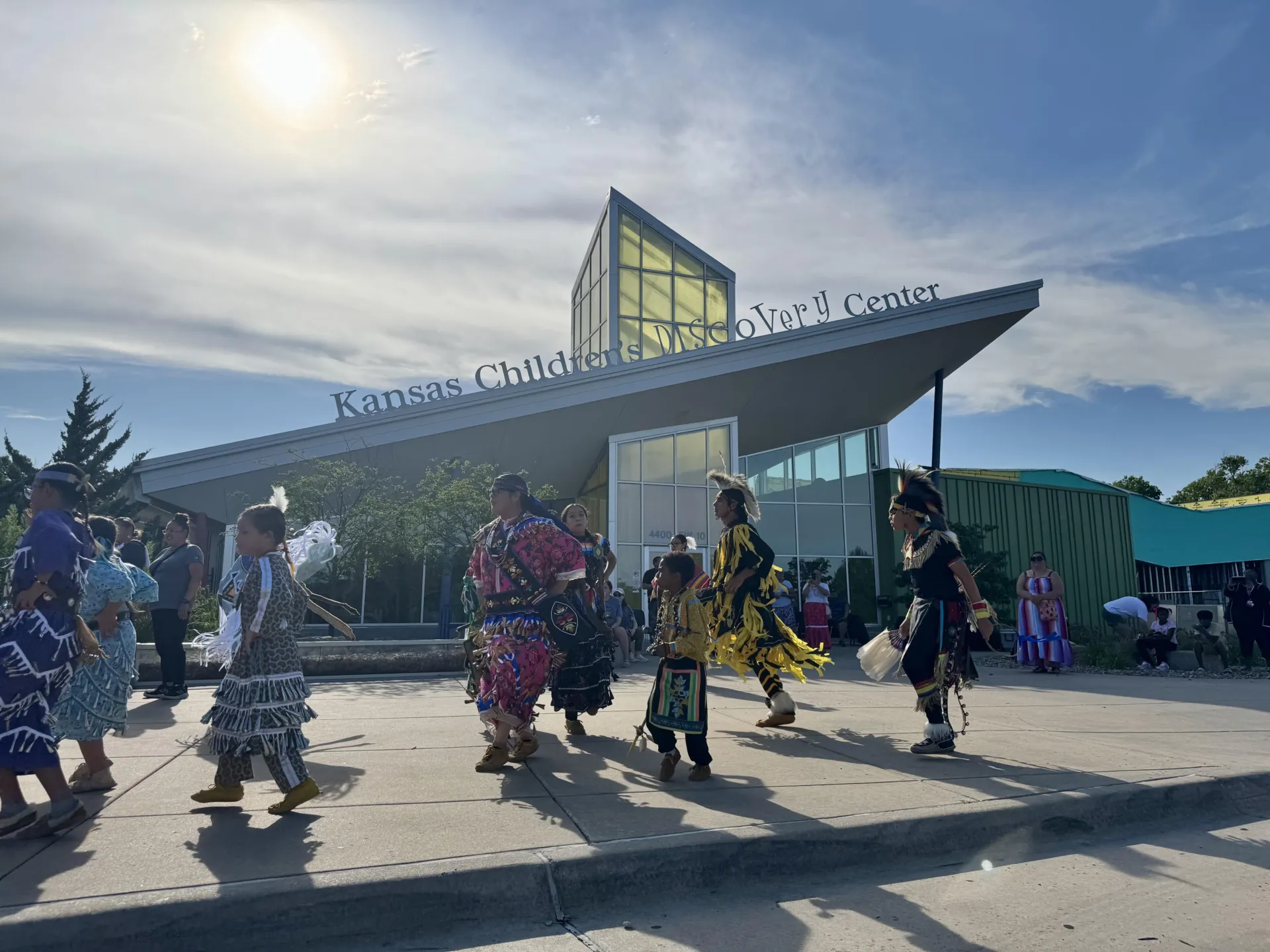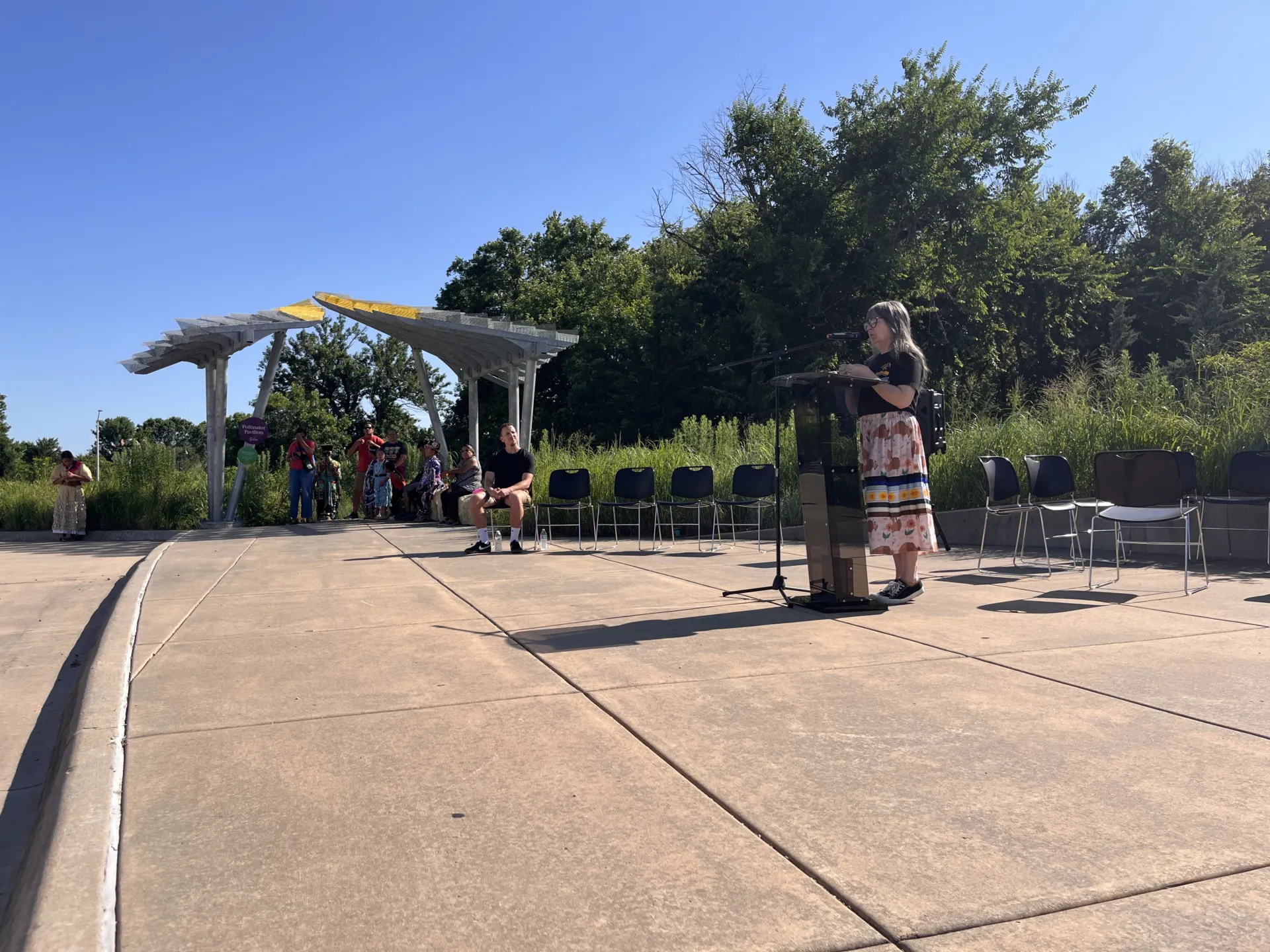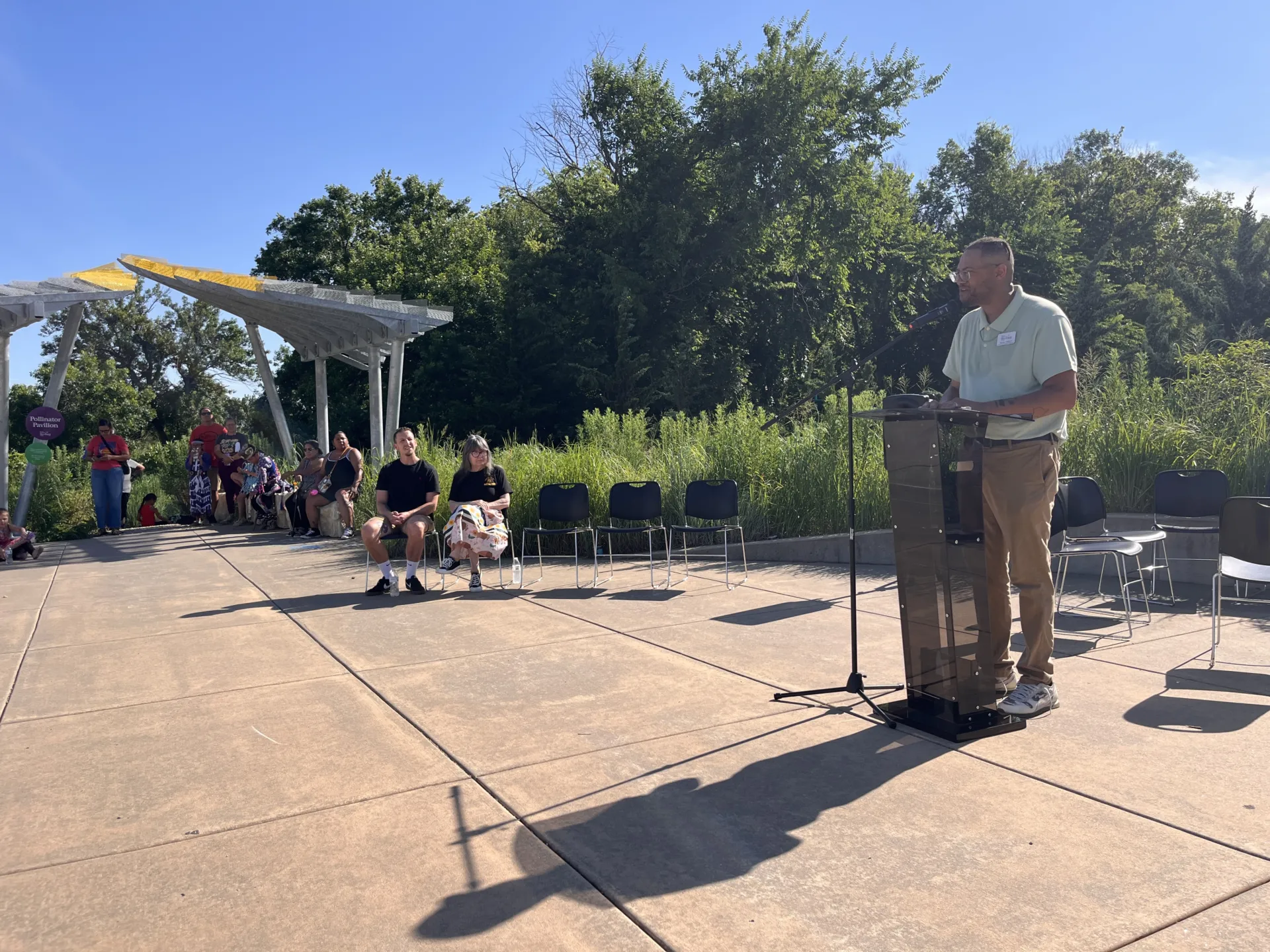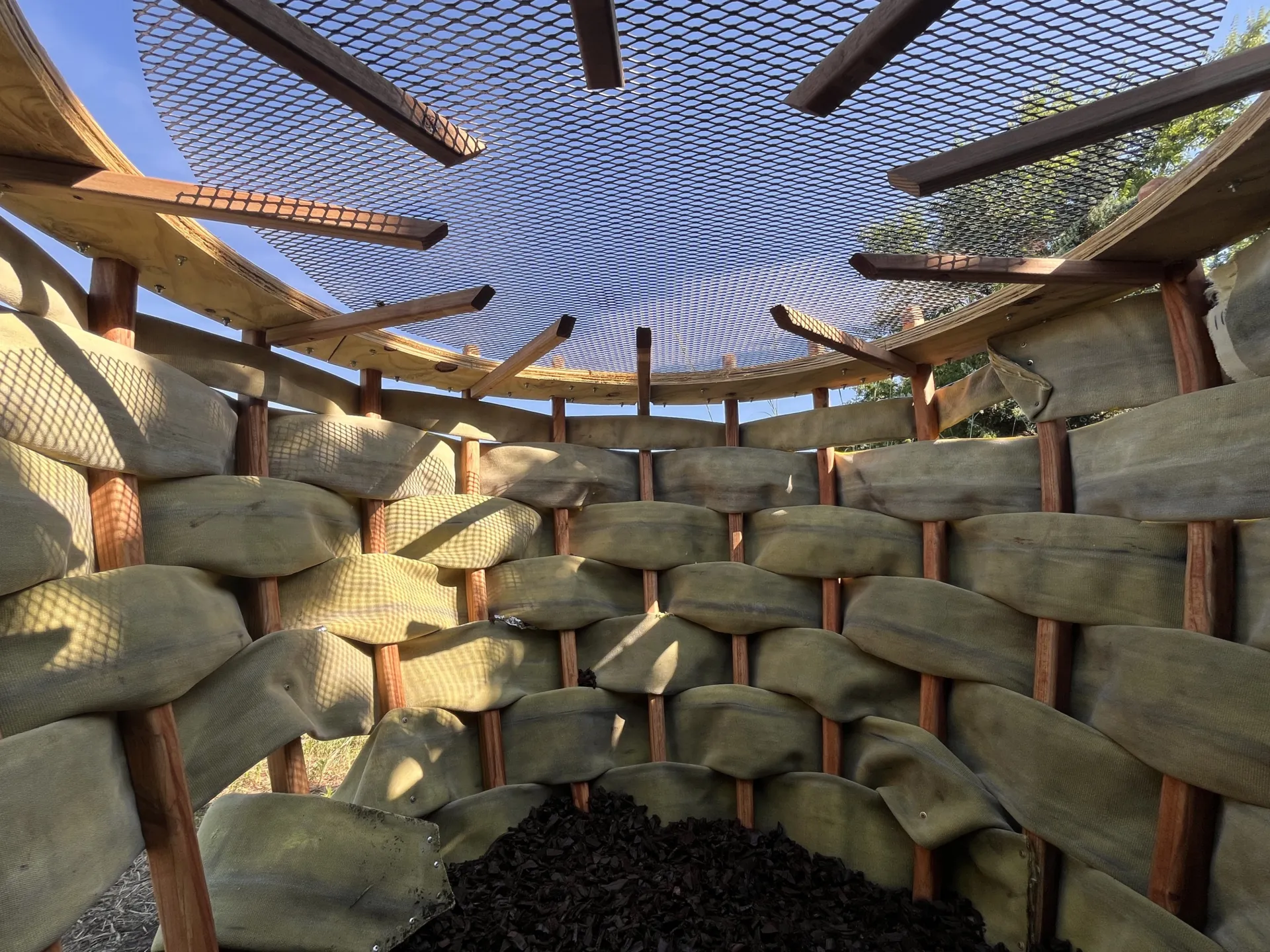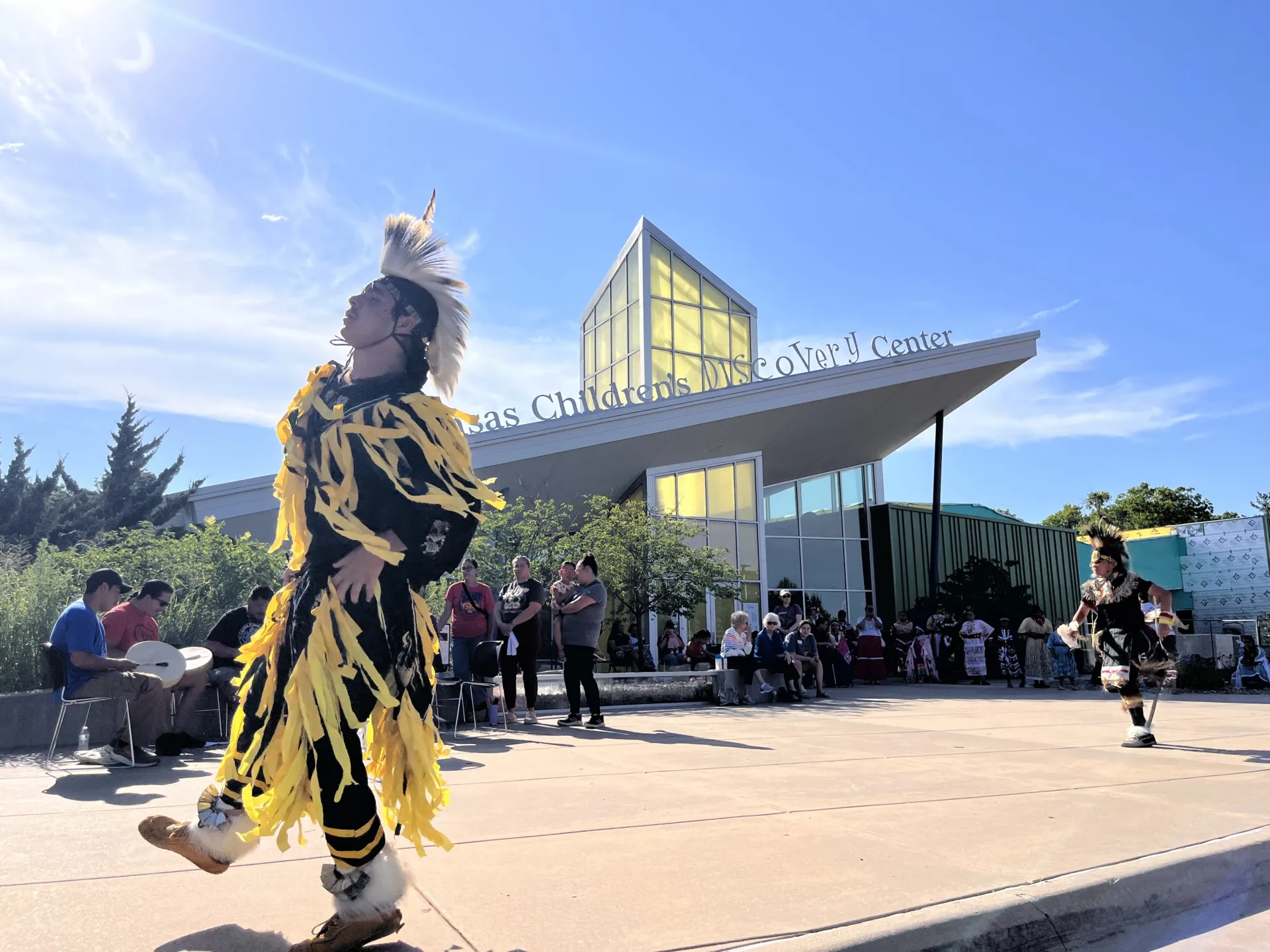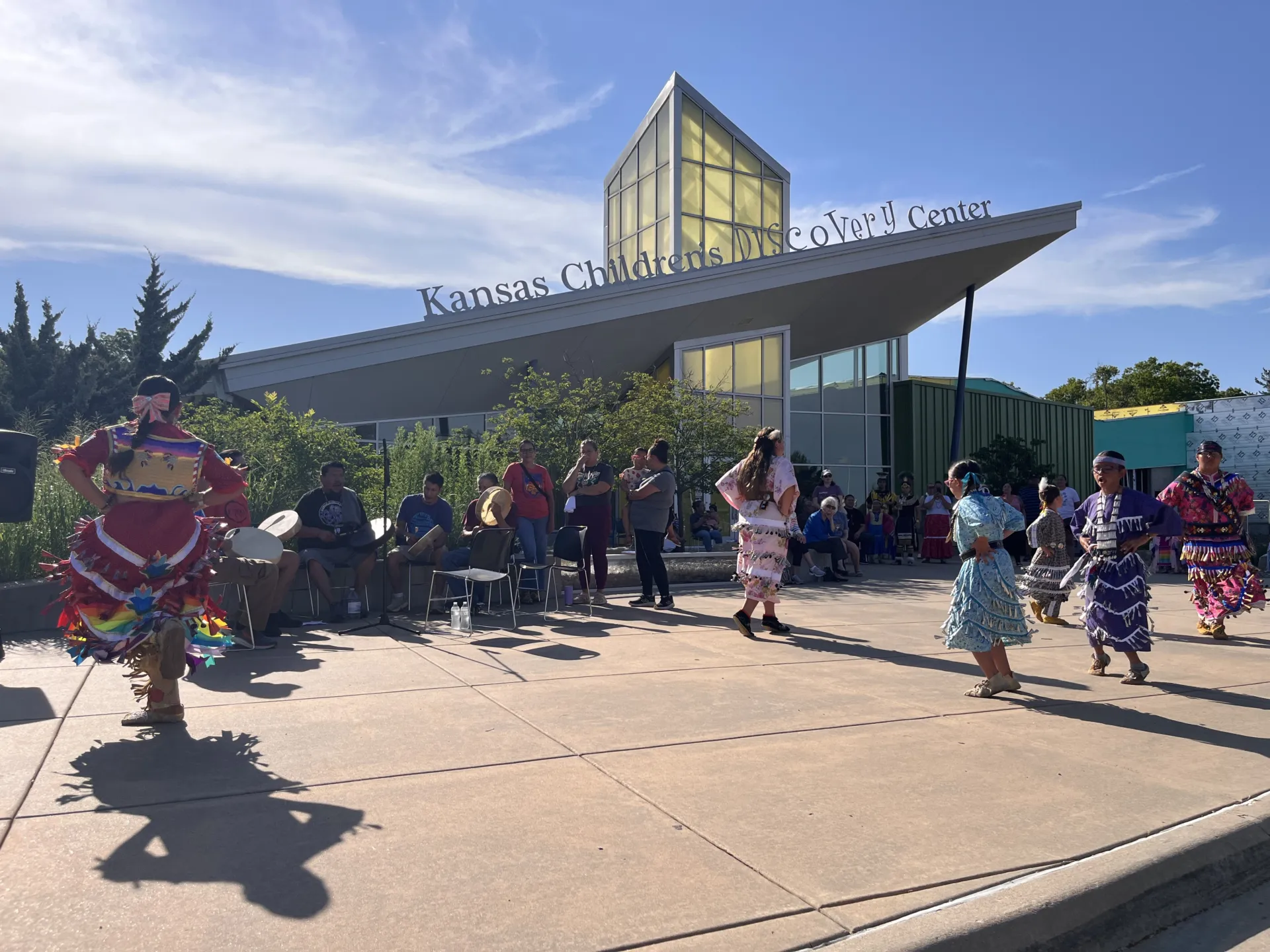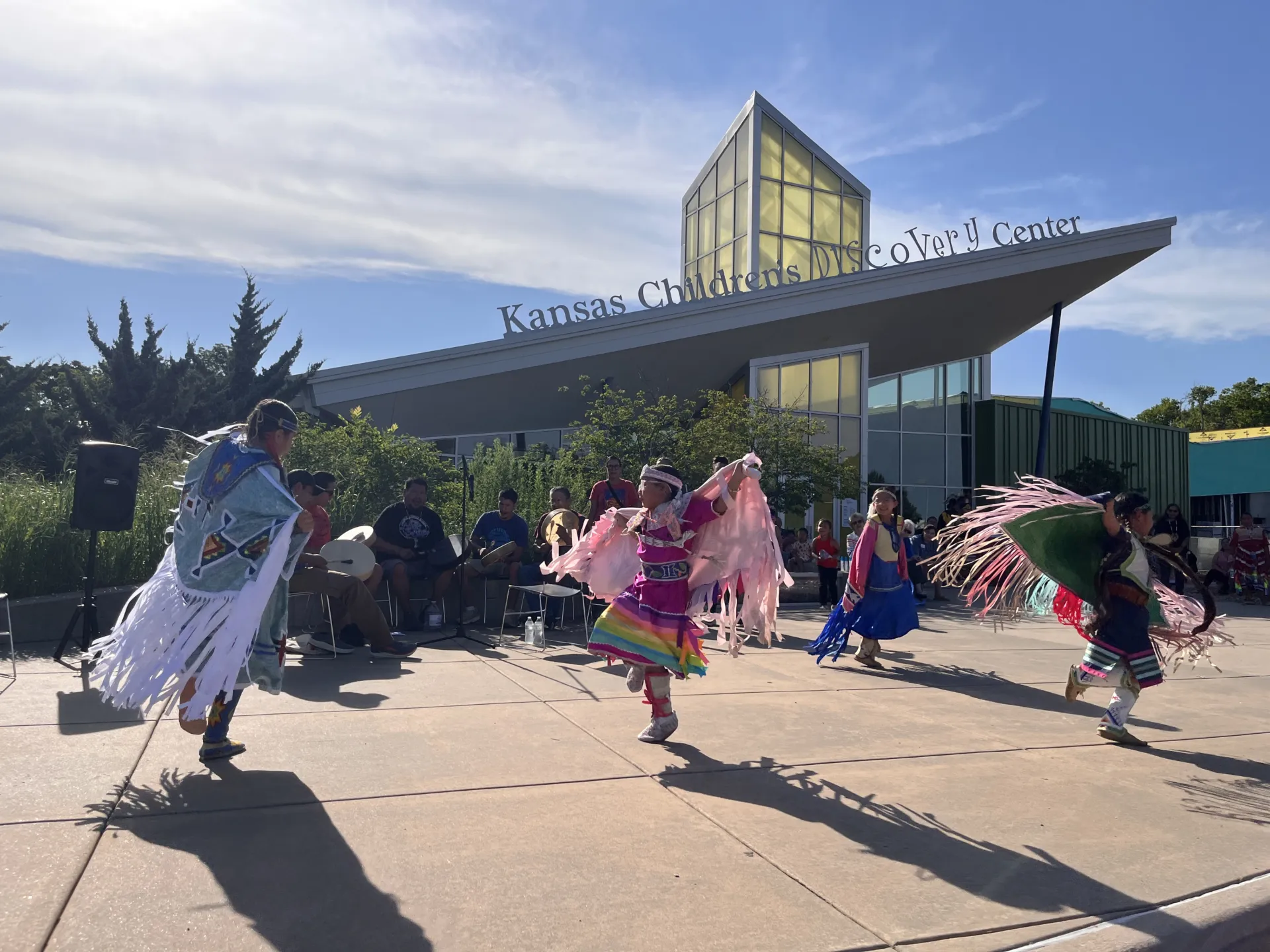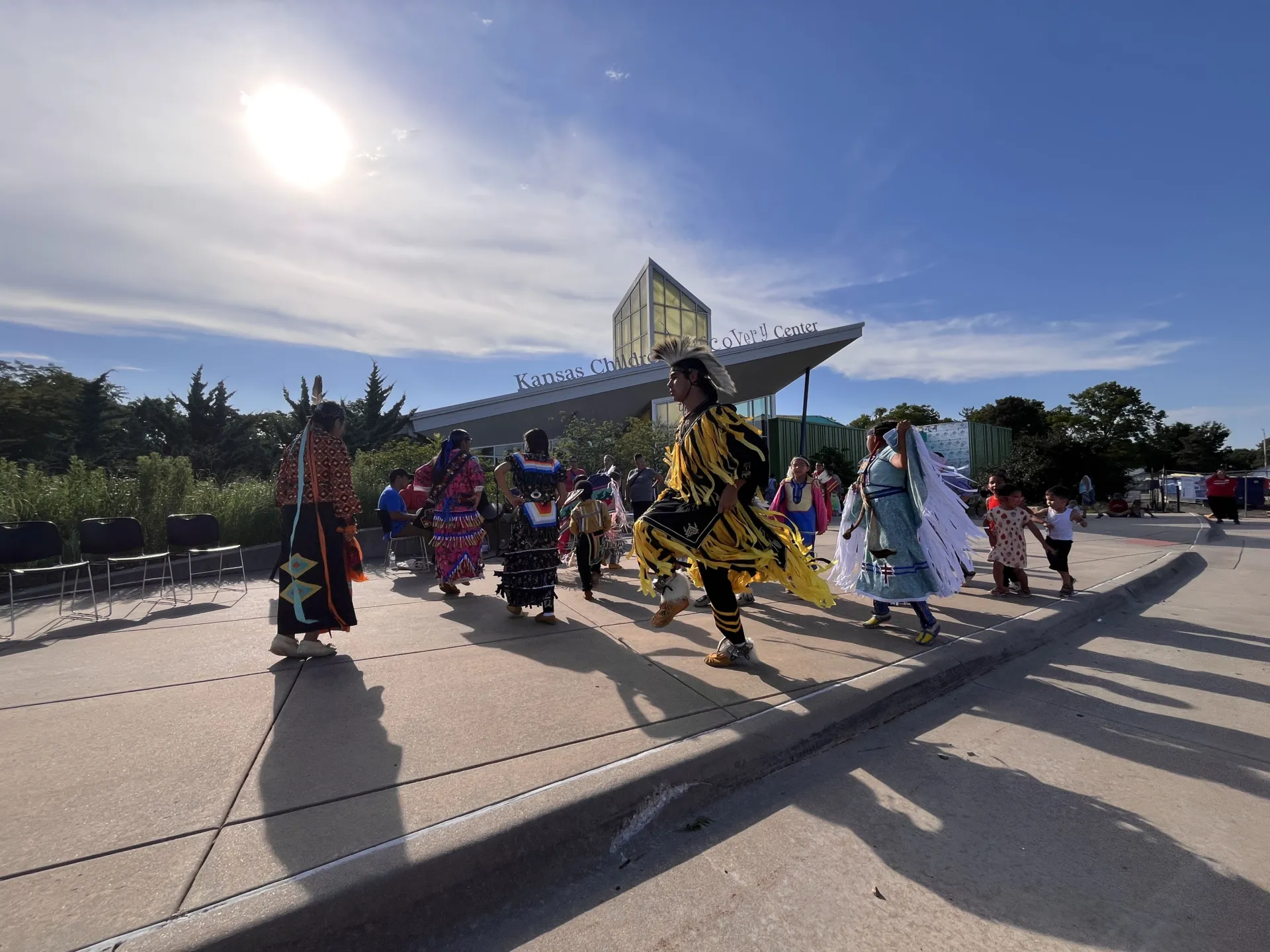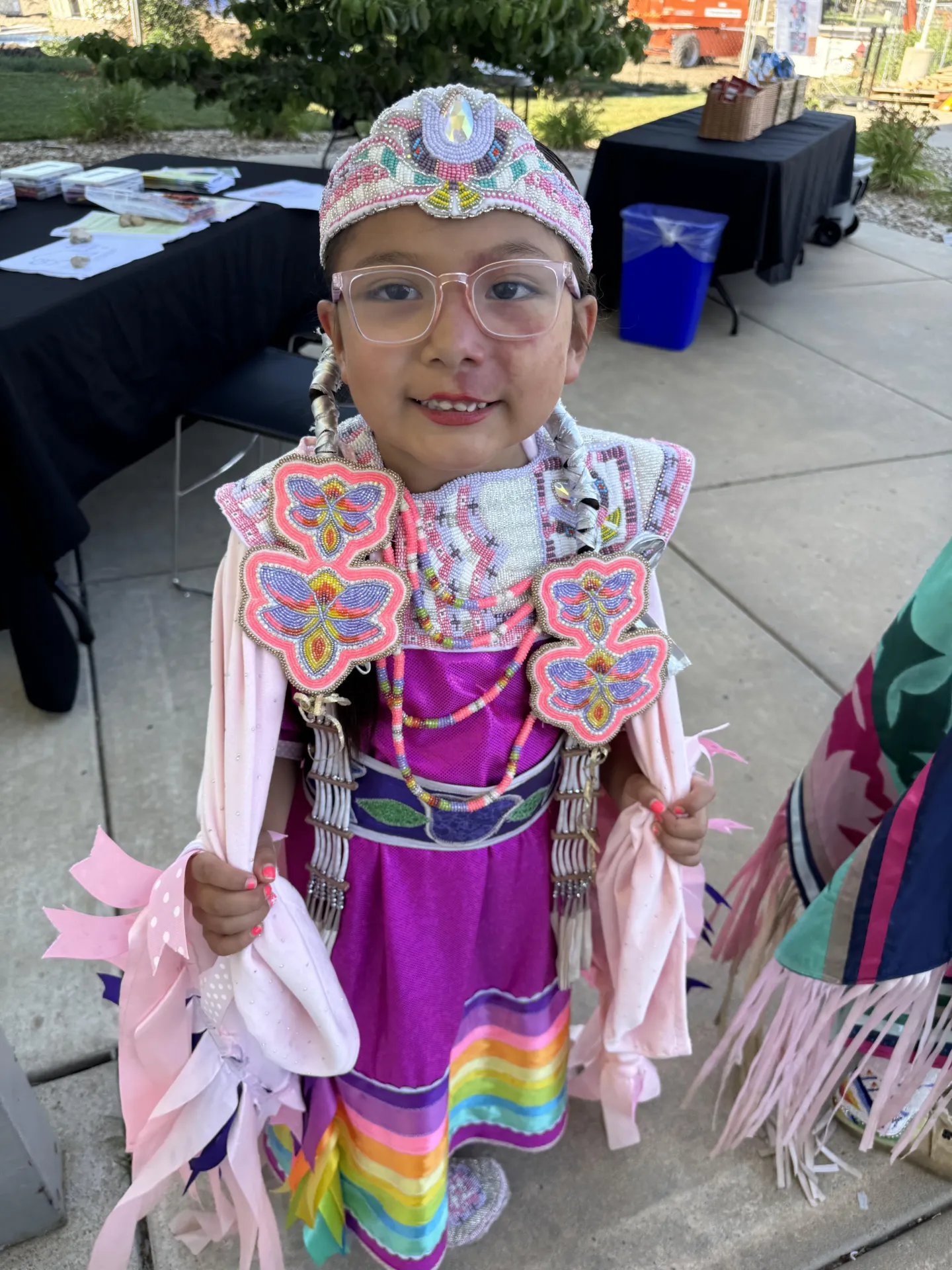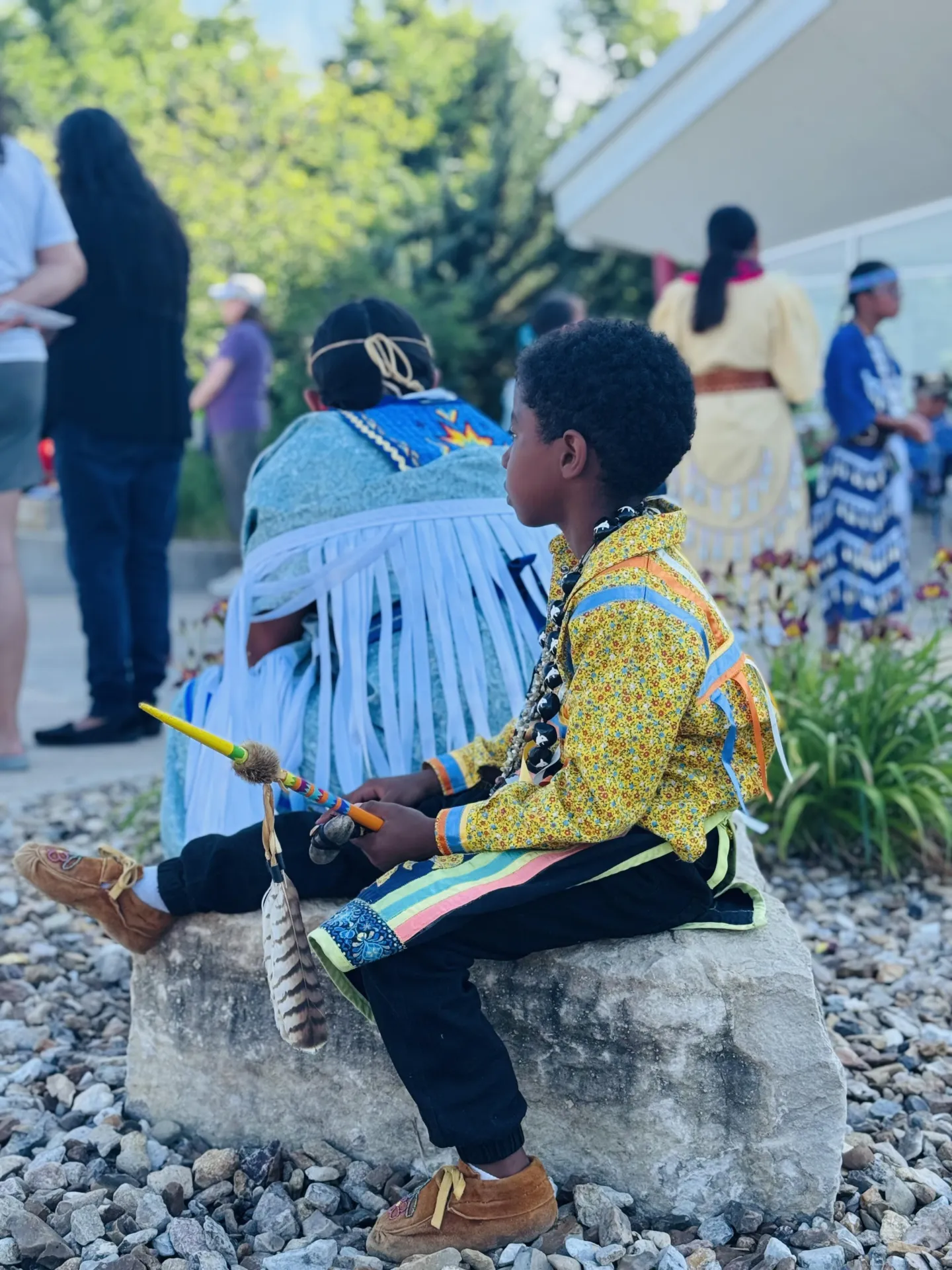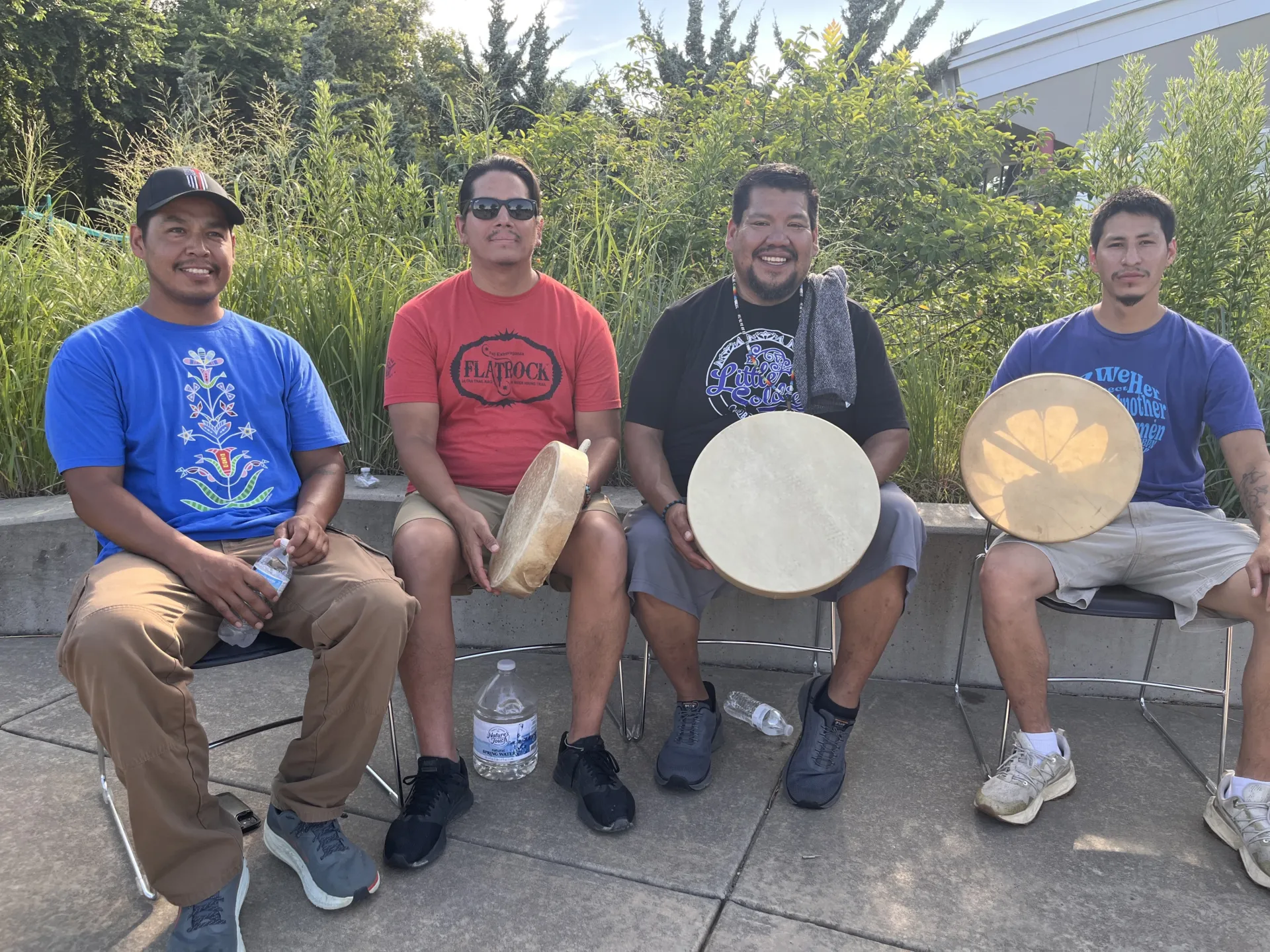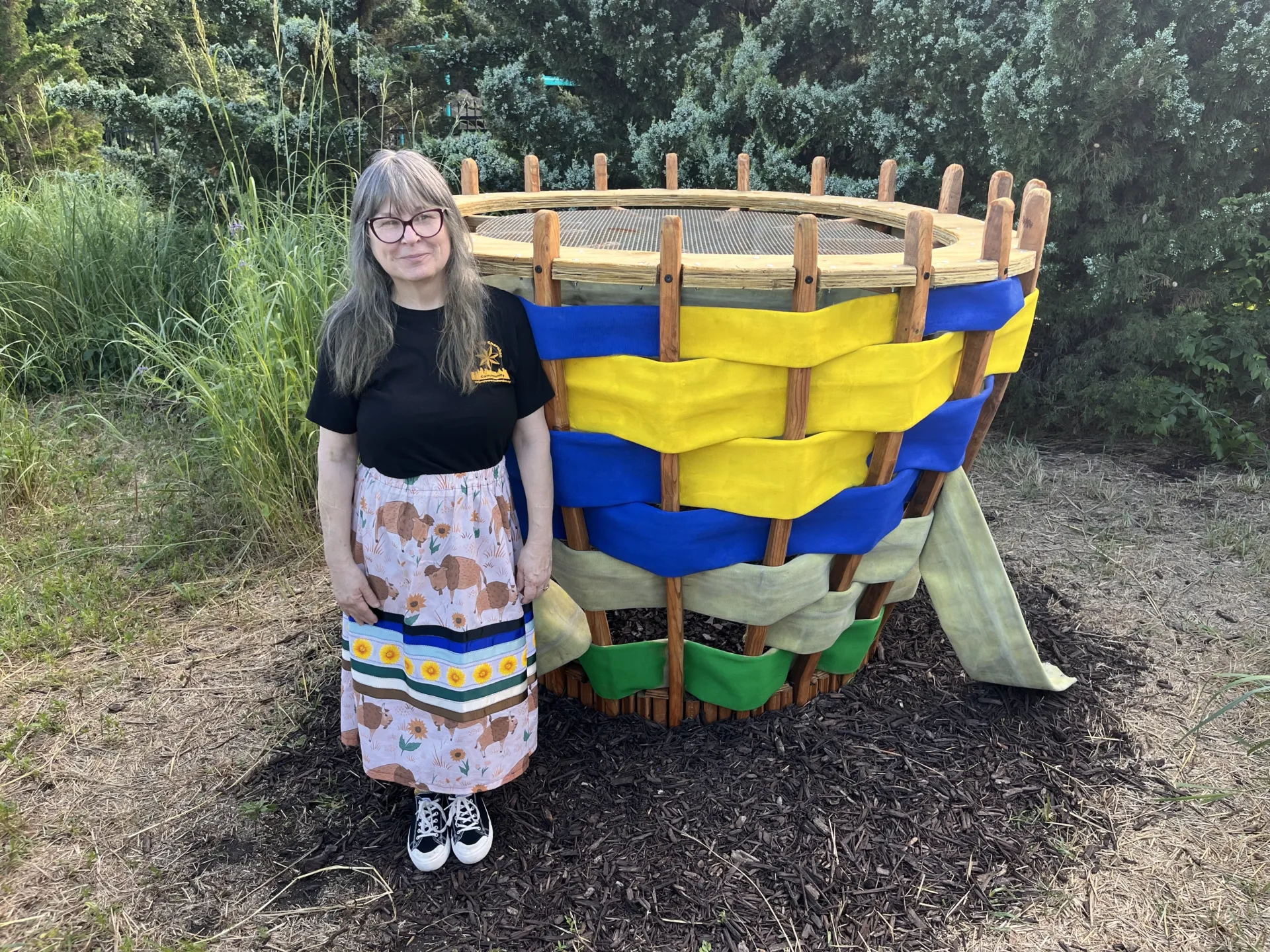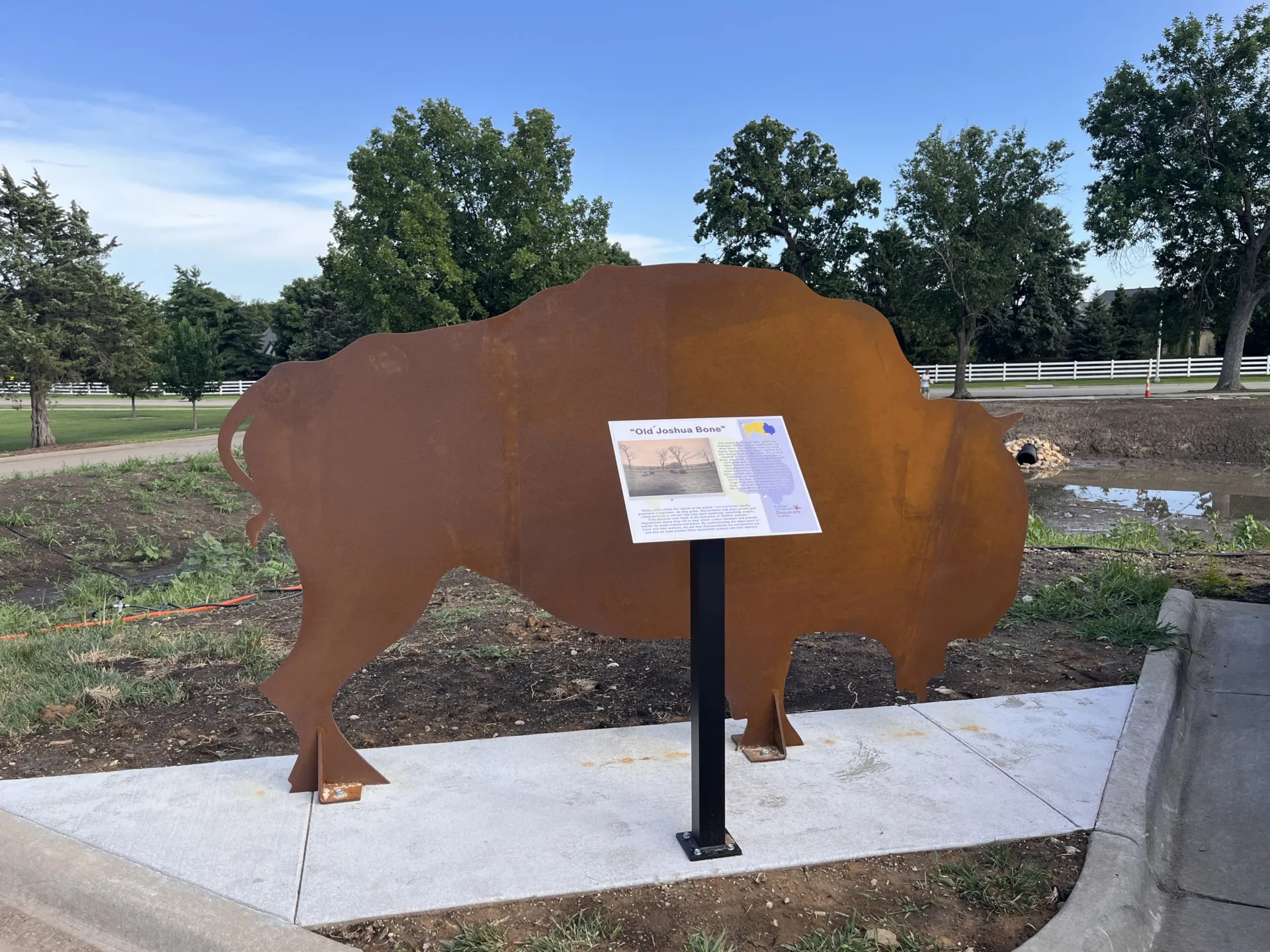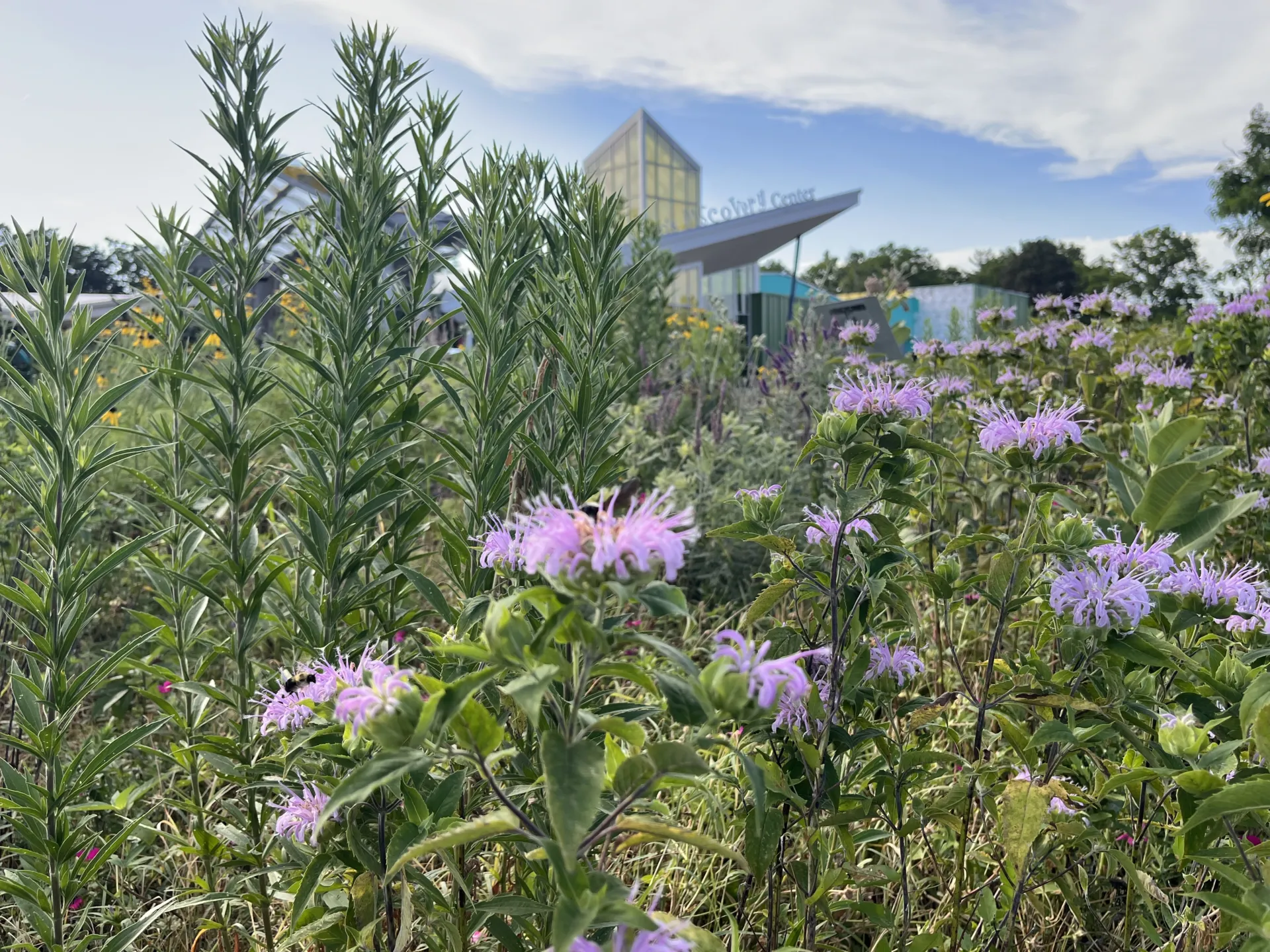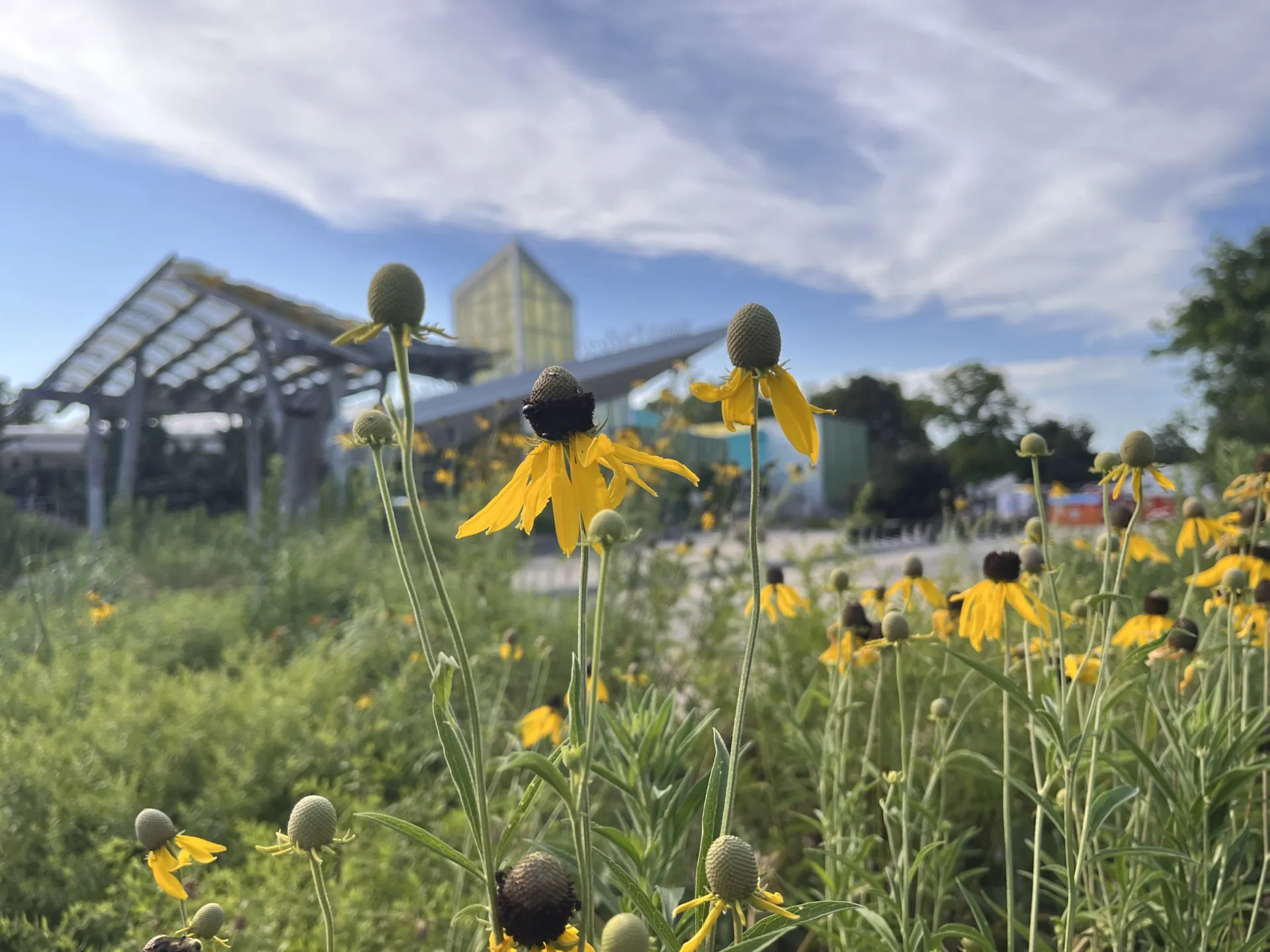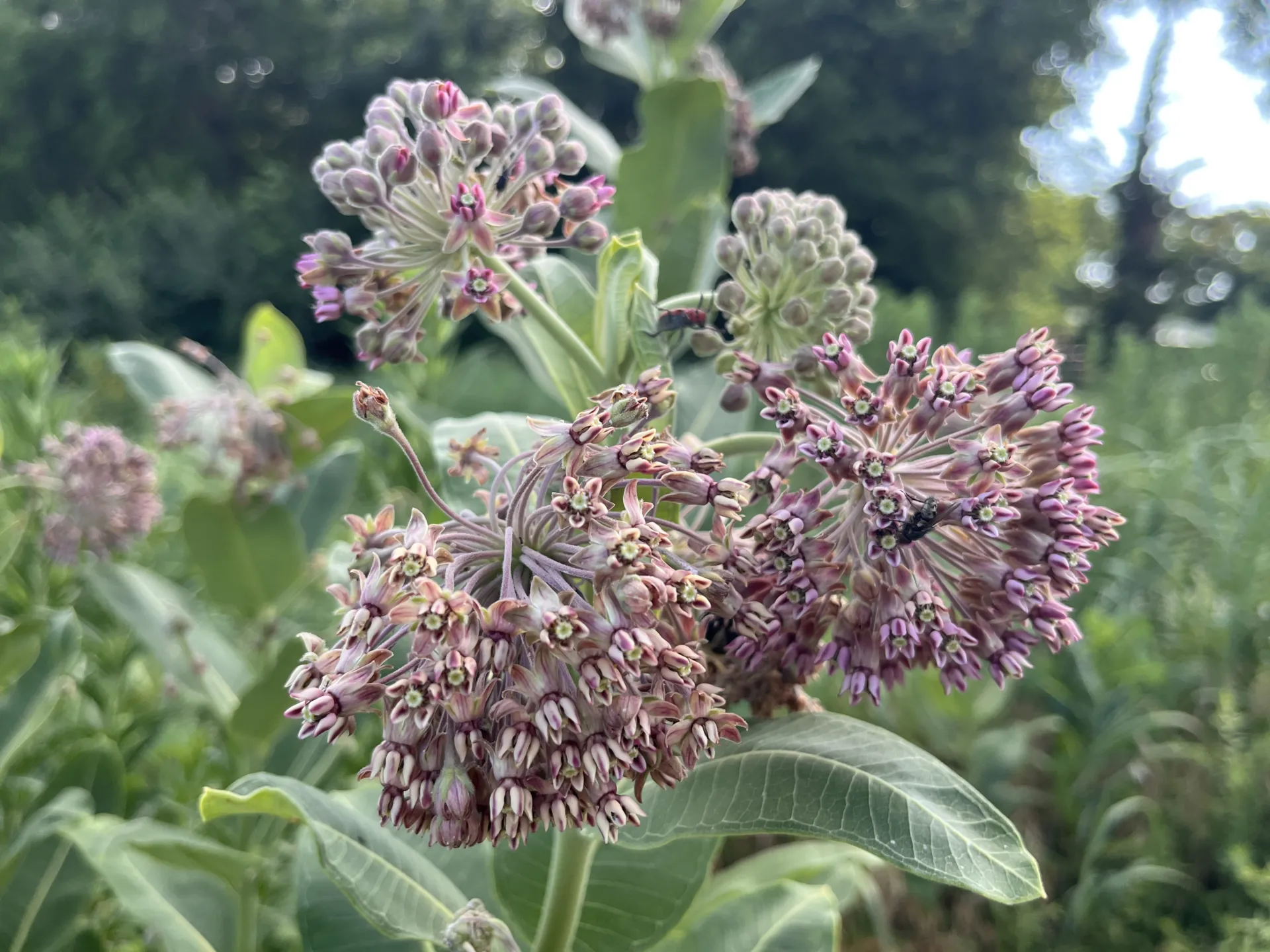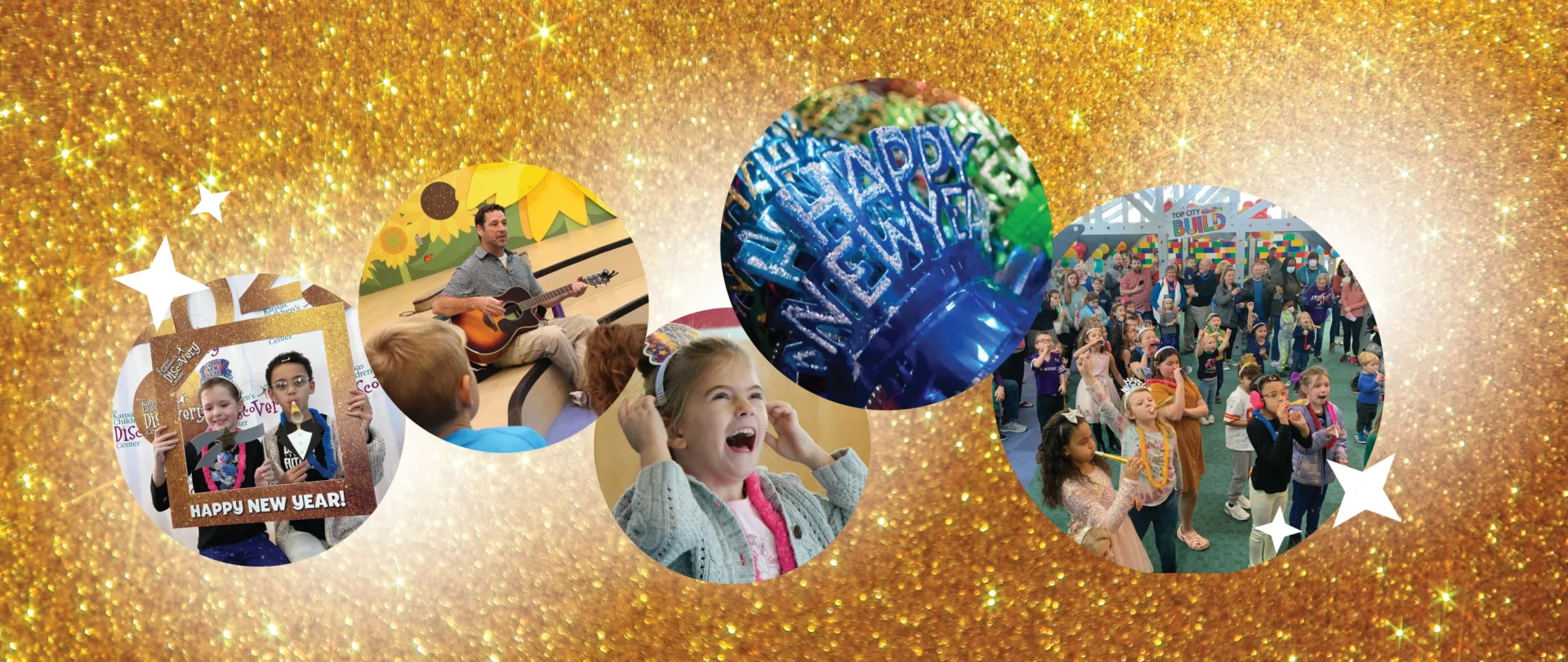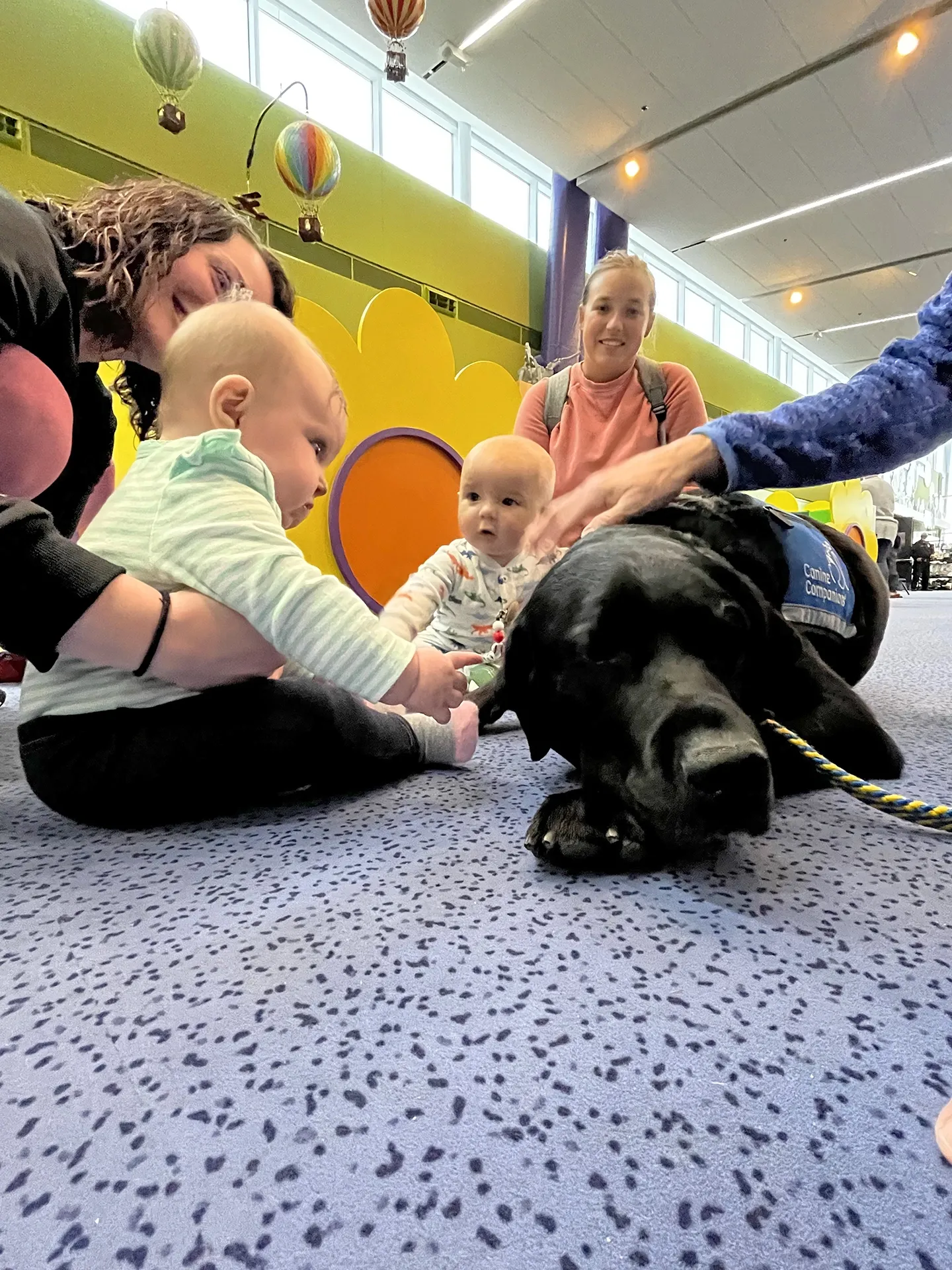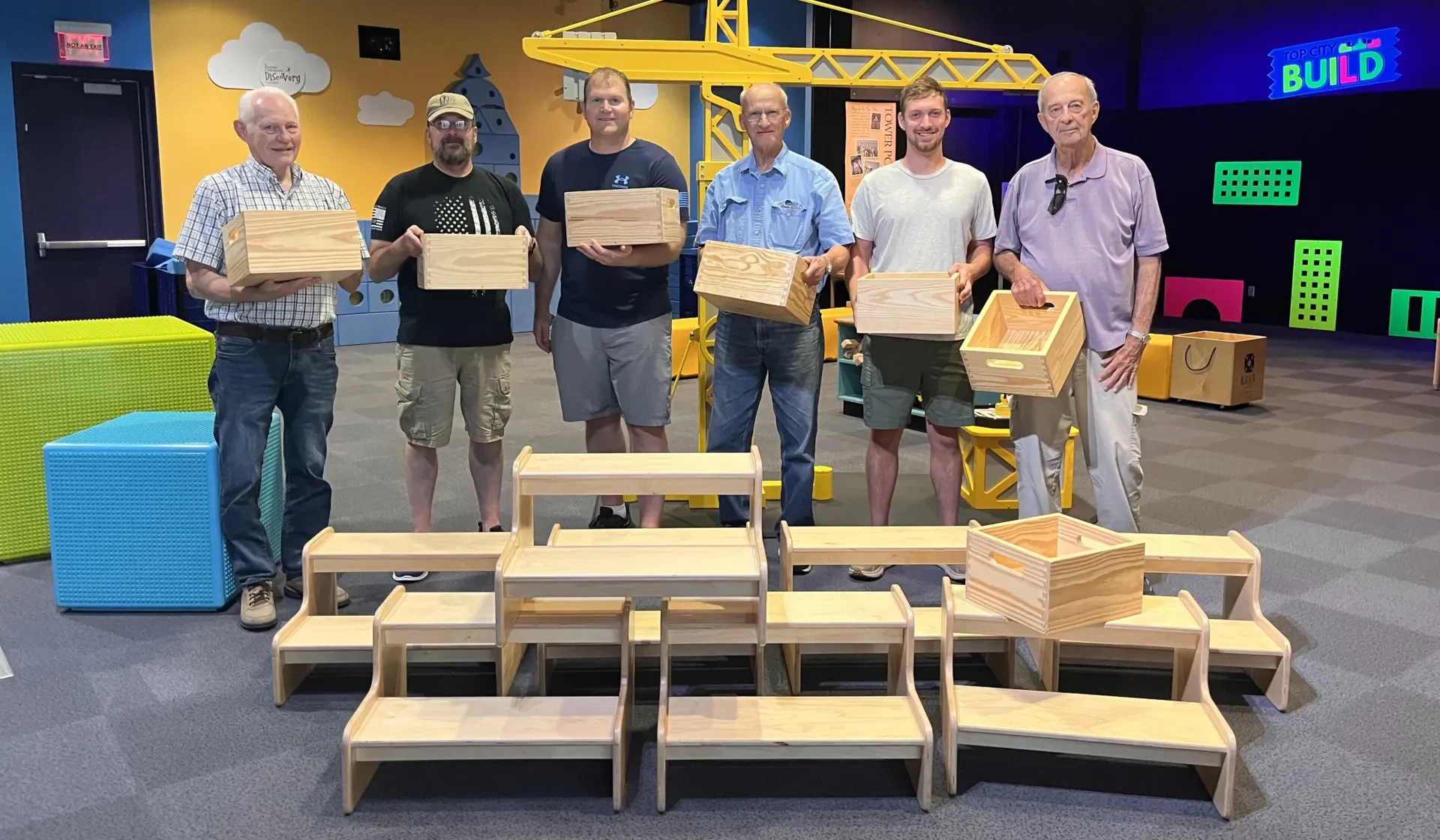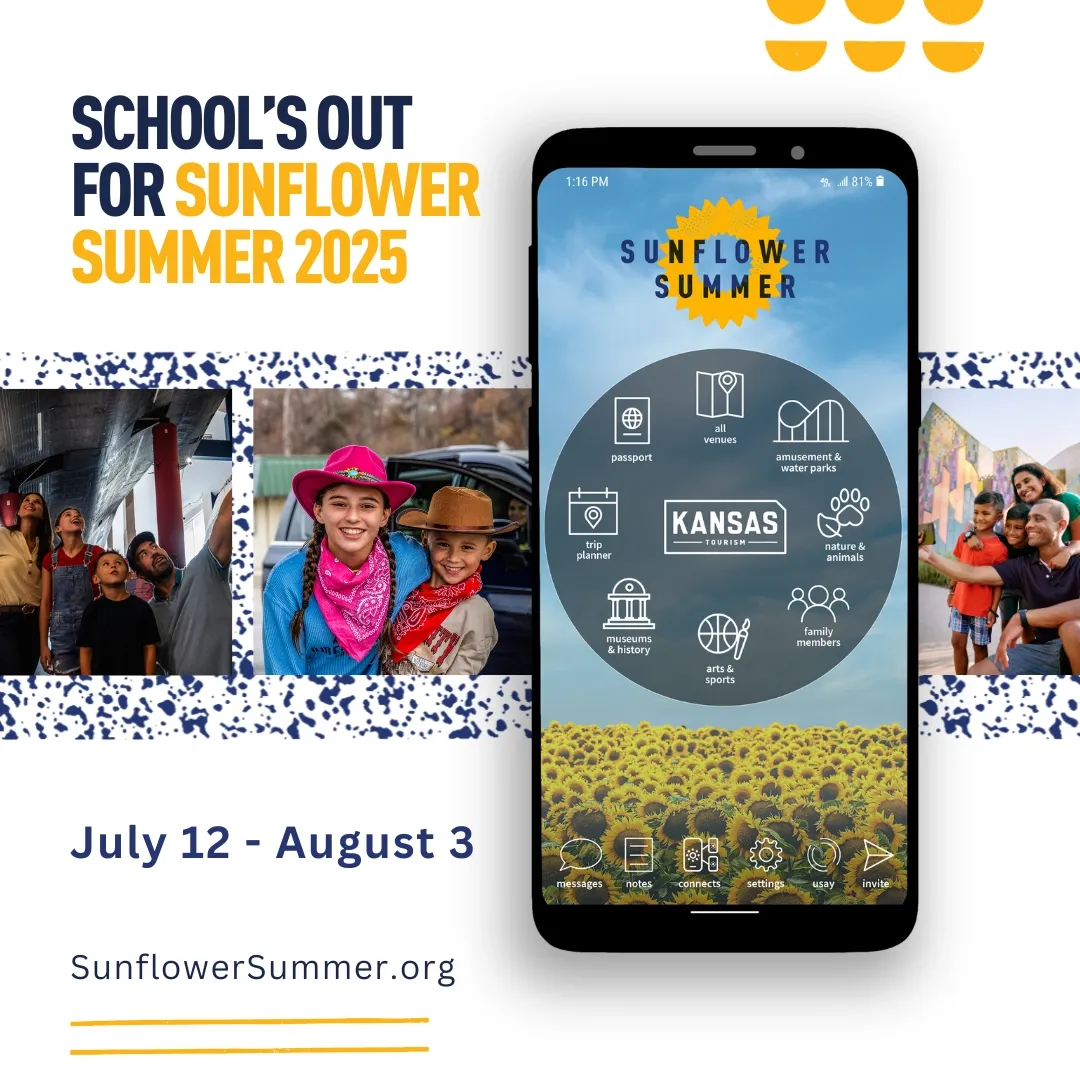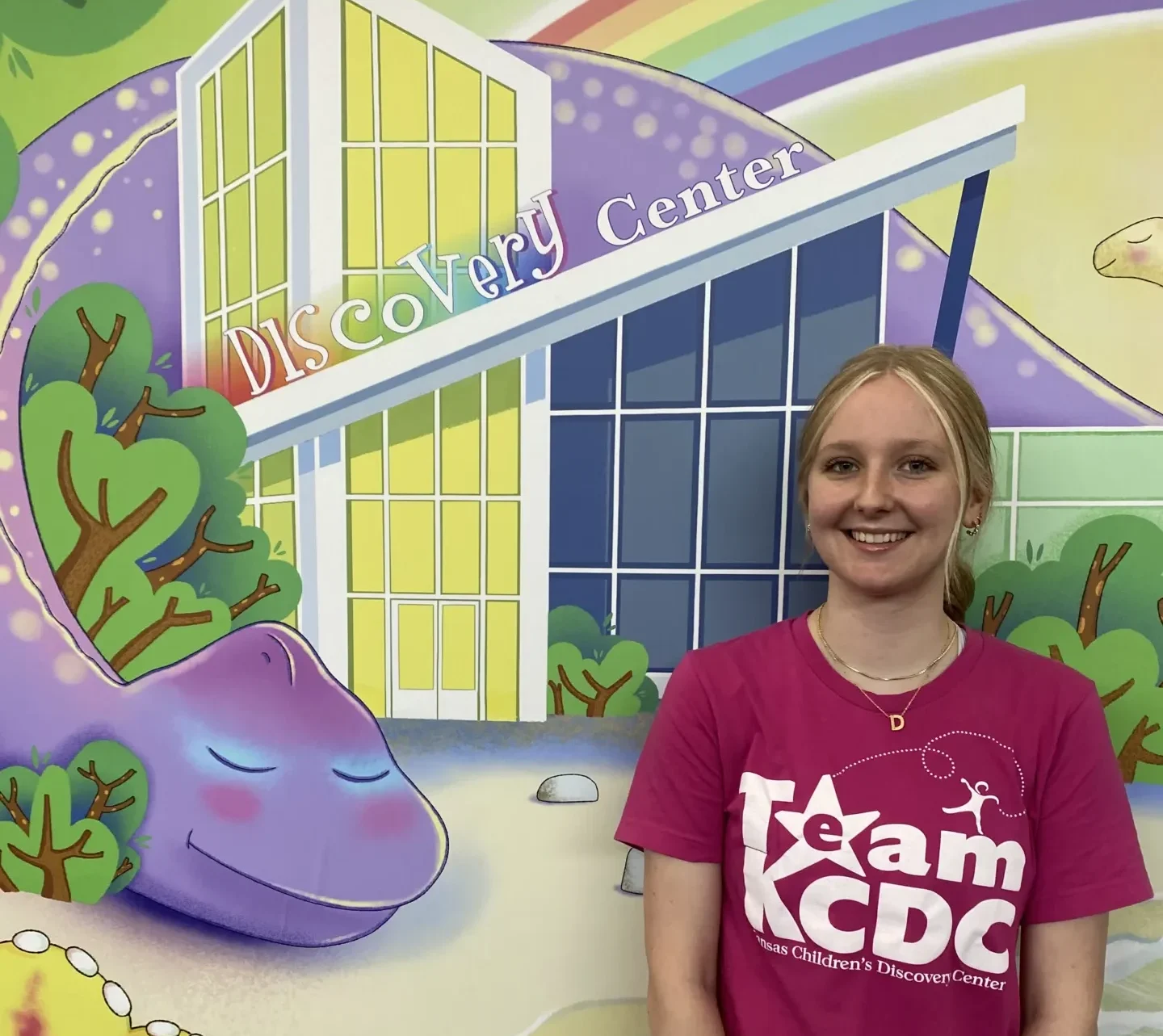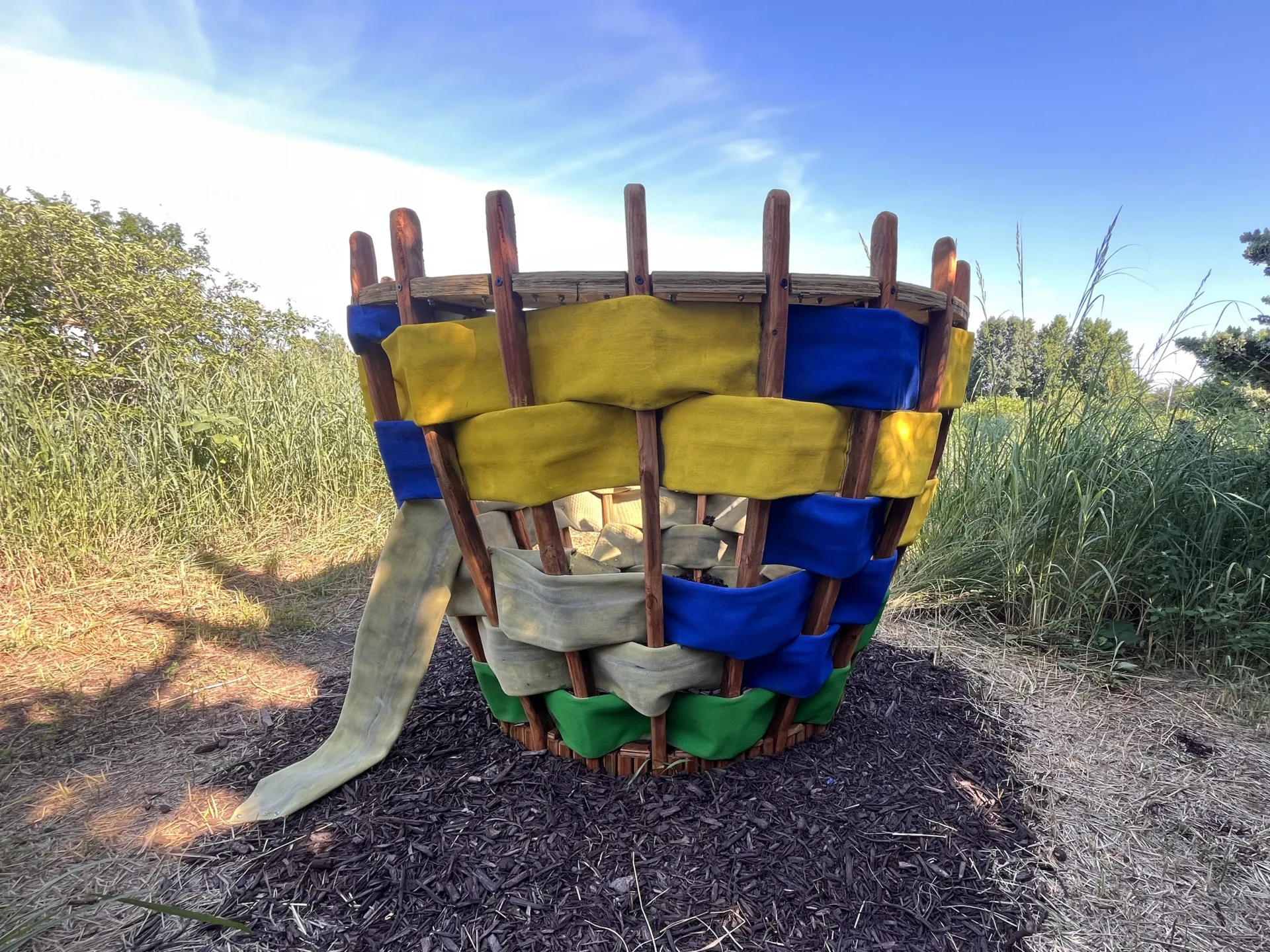
Two new installations help tell the story of the prairie
June 29, 2025 – The Discovery Center dedicated two new art installations in our Native Prairie Grass and Wildflower Habitat this weekend. Lisa LaRue-Baker, Cherokee Nation tribal citizen and multimedia artist, conceived of and created the Native American Basket Weaving Installation. It is a giant weaving basket constructed primarily from wood and woven with firehose, with segments of the firehose available for children to weave in and out of the basket.
We also dedicated the installation of a statue of a bison’s silhouette in recognition of Old Joshua Bone, a bison that once lived where our Native Prairie Grass and Wildflower Habitat is located, with six other bison as a donation from the Gage family. Named after his owner, Joshua Hill, who lived in Pontiac, Michigan, Old Joshua traveled to Topeka on a train with Roy L. Bone, who made the purchase. As the bison herd grew with the birth of new calves, many famous visitors came to see them, and experts praised Old Joshua as the finest bison they had ever seen. The bison were credited with starting the Zoo at Gage Park, leading Topeka to build a streetcar line to the area, which helped transform Gage Park into the wonderful park it is today. The herd lived here until 1926, but Old Joshua Bone passed away earlier, on December 3, 1912.
Both installations were sponsored in part by the State of Kansas through the Kansas Arts Commission and the National Endowment for the Arts.
In addition, we hosted an extraordinary performance from the Royal Valley Native American Singers & Dancers, as led by Director, Title VI Indian, Anita Evans. They shared stories, performed a suite of traditional songs and dances in full tribal regalia, and concluded with an intertribal dance where the audience was invited to join in.
Prairie land, at one time the world’s largest ecosystem, once sprawled across North America. Today, the 170 million-acre span that was once tallgrass prairie has dwindled down to an estimated 4 percent of its original territory. The tallgrass prairie maintained at the Discovery Center, located outside the museum gates and free to the public, is designed to allow families to explore this endangered ecosystem.
